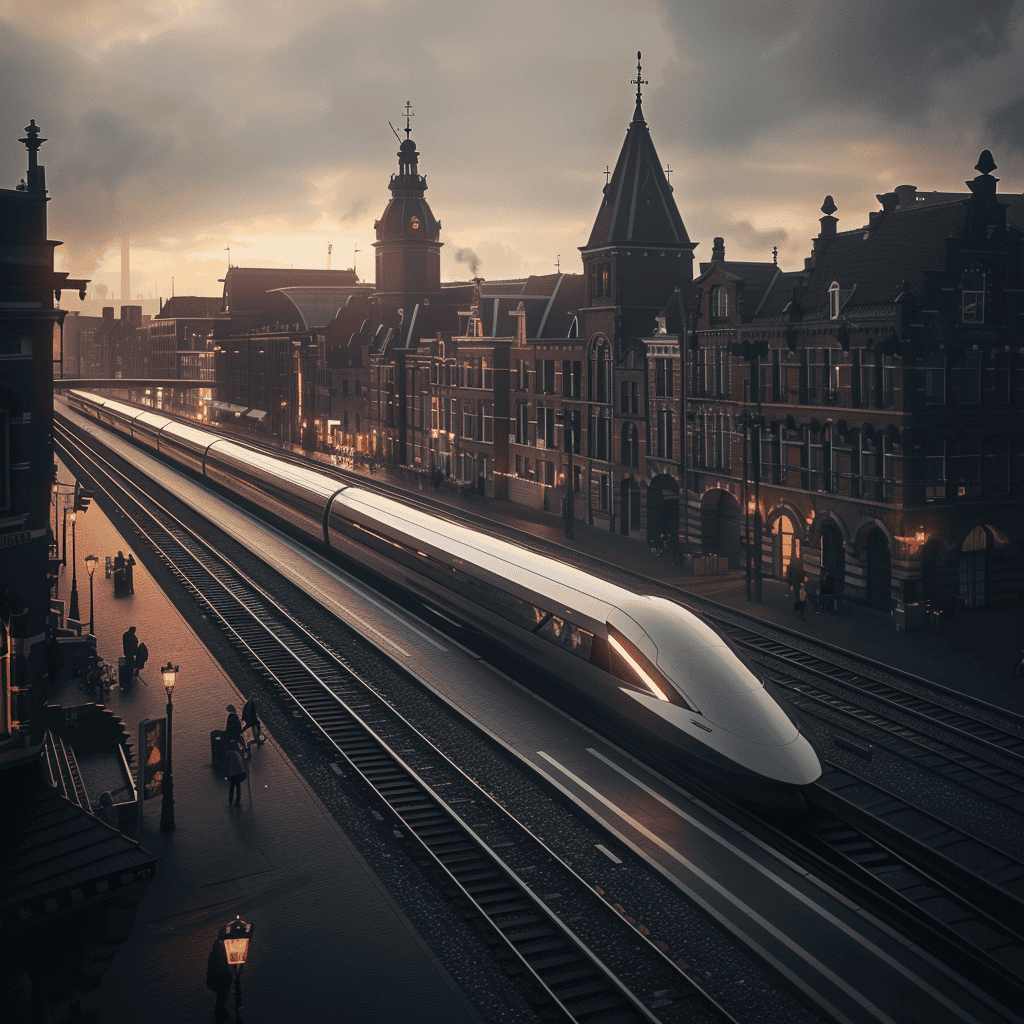
I sit at my desk and make a first attempt to put my column on paper. As I’m writing down my words, I observe my surroundings. Next to me are five cardboard boxes full of stuff. The TV is unplugged and patiently waiting to be taken away. On the glass coffee table are three piles of coat hangers. As I walk to the coffee machine for my morning cappuccino, I almost trip over a garbage bag bulging with clothes. In the hallway, a cat’s paw taps gently against my ankle between boxes. Floofie seems less bothered by the clutter than I am.
It’s time to go. I’m leaving Berlin; for now, at least. What am I going to miss? Well, everything? My new friends. The vegetarian restaurants. The chess club. Techno. ‘You can always take the train up and down: you’ll be there in six hours.’ I have repeated that phrase in my head countless times over the past few days to calm myself down a bit.
Six hours. That’s not so bad. Yet I expect the future to look even brighter. In recent years, I have written several stories about the plans surrounding the hyperloop. With the hyperloop, you can travel from Amsterdam to Berlin in just 55 minutes.
Let’s imagine a scenario in which European (capital) cities are hyperconnected thanks to the hyperloop. What would the world look like, if ... we could visit our colleagues and friends in Berlin, Rome, or Paris within an hour?

Colleagues across Europe
For workers in Holland, the average travel time to the office is about 50 minutes We find it perfectly normal that colleagues live elsewhere in the country. They come by train from Zwolle or Arnhem. But with all the progress around the hyperloop (for example, we recently managed to change jobs for the first time in an experiment), it probably won’t be terribly long before we can welcome colleagues from, say, Krakow.
Your team is now truly pan-European That’s not only fun for exchanging stories (“Hey, I’m going to Poland tomorrow, what can’t I miss?”), but also convenient for the employer Demonstration going on in Frankfurt We send a reporter there as we speak Within half a day the trip is over, and in the second part of the day the story is already fully written and published.
Boost for the healthcare sector
Not only is journalism improving. The hyperloop is also making progress in the medical field. Specialists can travel effortlessly between hospitals in different countries, giving patients access to a wider range of treatment options. A specialist procedure scheduled in Amsterdam can be performed without difficulty by an expert from Milan, who will be back home at the dinner table with his family the same evening.

Transporting fresh products
A hyperloop means more efficient and reliable supply chains thanks to faster transportation options for goods. Fresh produce reaches consumers abroad in no time. Why settle for a shelf-stable waffle from the supermarket when the hyperloop can bring one fresh from Liege for you? And: throw in some chocolates too!
Meeting climate goals
Last but not least, the hyperloop is helping Europe meet its climate goals For example, a study by Hardt Hyperloop shows that if a route is built between Amsterdam and Rotterdam, carbon emissions could be reduced by 600,000 tons That’s something.
Hardt Hyperloop anticipates a commercial hyperloop will be operational in Europe by 2030 The Delft startup aims to successfully complete all safety tests for this innovative transportation system by 2027.
Overcoming hyperloop anxiety
Admittedly, it will take some getting used to whizzing through a vacuum tube underground at 700 mph. Perhaps, as with fear of flying, we will have to overcome our hyperloop anxiety. I am already thinking about an effective therapy. Which, by the way, I would be only too happy to undergo myself, if it meant that I could attend a chess tournament every weekend in Berlin. Sign me up!
Would you like to read more of my columns? Then click here!

